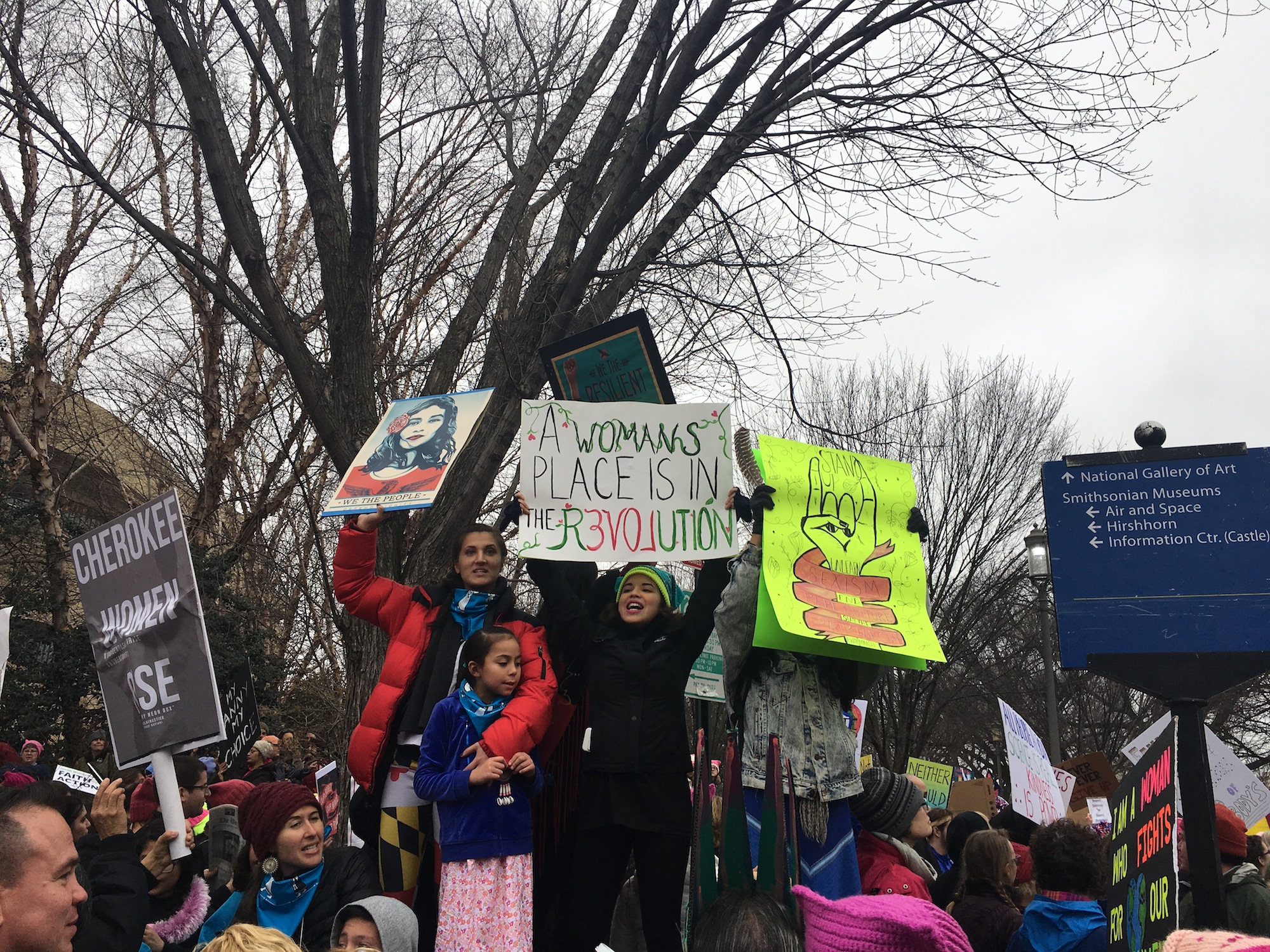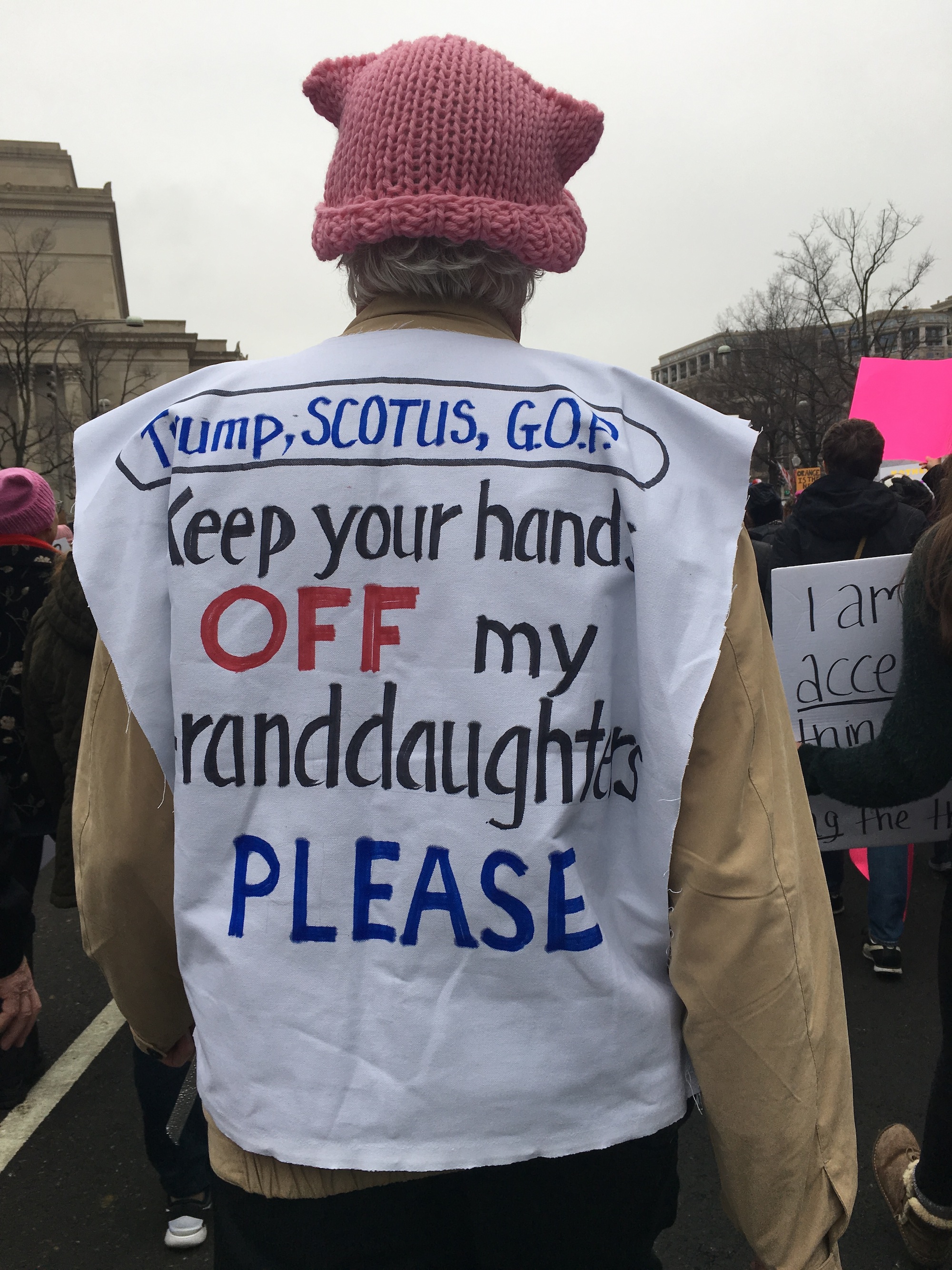As a young journalist, I’m told that it’s exceedingly rare to find myself in a situation both of my own volition and because my editor asked me to be there. However, on Saturday, Jan 21st, I found myself bring both my poster and my notebook to the Women’s March on Washington D.C. To get to the march, I woke up before I usually go to bed on a Saturday morning and boarded a bus with dozens of other similarly groggy people.
Before we took off a man about my grandfather’s age told my friend and I, “We’re doing this for you.” Young people, he meant. I could only think to thank him.
We soon pulled out of Manhattan, accompanied all the way by other buses filled with women in pink hats, the symbol of this march. The metro passed us at one point, visibly crowded even from a distance, and the people waiting on a completely packed platform at a stop outside the city were forced to wait for the next train. Or the next one. Or the next.
This march was incredible for at least one reason: the sheer number of people that it drew. Organizers expected 200,000. But conservative estimates say that it pulled 500,000, with others going even higher. In case it may by hard to conceptualize a mass of 500,000 people, Yankee stadium can hold up to 54,251.

In fact, when the march started, going from the Capitol Building to the White House, there were so many bodies filling the route that there was no longer any room for anybody else to enter the path. The people leading the march had made it to the end, before most had even started. So we stood in a confused crowd for about an hour before finally the decision was made to shut down Pennsylvania Ave, and we marched ourselves down the same path that Trump’s inaugural parade had taken less than 24 hours before.
Some amazing people I spoke with during the march:
Dorothy: a grandmother coming from Alexandria, Virginia. Her sign read something like “My arms are getting tired from holding this sign since the ‘70s.”
Why are you here today?
Because I’ve been doing this for a long time, and I don’t want to take three steps back.
What do you want children to learn about this march in school? What do you want them to ask?
I want to be able to tell my granddaughters that I cared enough about them to be here, and then I want this to be the call to action. The march is not the goal. The March is the beginning of a strong action and we all have to step forward and protect each other’s rights.
Do you have any hope for a Trump presidency?
None

Kim: Middle-aged woman from New York. She was engaged in conversation before I interrupted, but still graciously spoke with me.
What do you want children to ask about this march in the future?
I want people to ask about this march what they asked about the civil rights march: How did we completely turn around a bleak situation and create a whole legal infrastructure, a political infrastructure that repudiates patriarchy, racist patriarchy, oligarchy. I want this to be a line in the sand. We’ve been pushed to the edge, and I want this to be the great pushback.
Do you have any hope for the Trump presidency?
Yes, I have a great hope for it. That it ends.

Suzanne: From Tampa, Florida. The woman with whom Kim was speaking.
Why are you here today?
I am here because I had to be in a place to stand and to put my energy in loud opposition to this tyrant and his regime. And I just knew that if I wasn’t here surrounded with like energy, I would probably explode at home. So here I am.
Jan: Coming from Colorado, Jan travelled the longest distance out of the people that I spoke to.
Why are you here today?
I’m here to say that we care for all humans across the world, and that we need to stand up for human rights, and I’m especially concerned about the issue of climate change because that’s going to affect all of us. It’s all of us, and it’s going to affect my grandchildren a lot, and I feel that it is now the time to move forward and not backwards.
Do you have any hope for a Trump presidency?

I hope it’s short.
This march wasn’t perfect. There was a marked lack of diversity among the participants, even after the organizing team’s efforts to promote inclusivity. One woman, after a particularly rousing call of “Black Lives Matter”, complained that we weren’t chanting enough about women’s rights and equality. I think she may have missed the point.
Despite its flaws, the boundless passion and energy for fellow human beings that I saw displayed today was nothing short of amazing. Our collective voice was heard today, the voice of the majority, of the popular vote. My professor, as she was getting on the bus, said, “I second guess myself 18 times a day, but never about this.”
As we marched along Pennsylvania Avenue with the Capitol building watching from a distance and shouting such chants as “This is what democracy looks like,” I felt proud to be an American for the first time in a long time. Love truly does trump hate.











